Ration card holds significant importance as it serves as a crucial document for ensuring food security among Indian citizens. Issued by the government, a ration card allows eligible families to purchase essential commodities like rice, wheat, sugar, and kerosene at subsidized rates from fair price shops.
Ration card also serves as a proof of identity and residence for various government schemes and subsidies. Overall, ration card play a key role in promoting social welfare and ensuring that no one goes hungry due to financial constraints.
What is Ration Card?
A Ration Card is an official document issued by the government that allows individuals or families to purchase subsidized food and other essential items from designated stores. Ration Cards are issued to low-income or economically disadvantaged households, and the amount of subsidized goods they can purchase is determined by their income level and family size.
Some examples of items that can be purchased with a ration card include food grains, cooking oil, kerosene, LPG cylinders, fertilizers, and fuel.
What are the Types of Ration Cards?
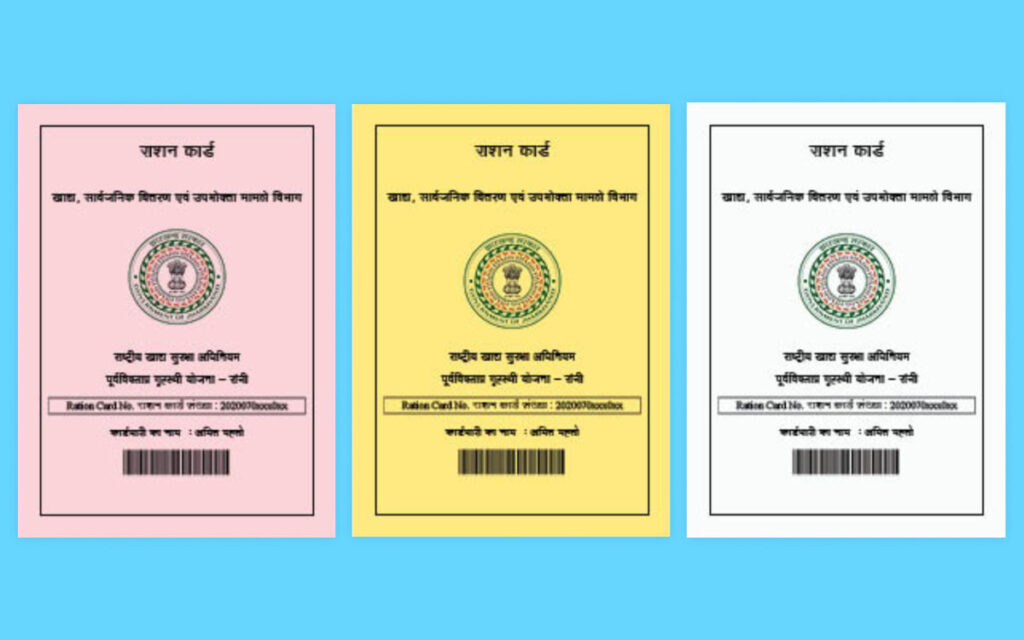
Antyodaya Anna Yojana (AAY) Ration Card:
- Eligibility: This card is specifically designed for the poorest families in India who are considered to be the most vulnerable.
- Criteria: Individuals with yearly earnings below Rs. 15,000, residents of slums, street vendors vending fruits and flowers, rag pickers, cobblers, and domestic workers stand to gain from the Antyodaya Anna Yojana (AAY). Additionally, construction workers are eligible to seek these benefits.
Below Poverty Line (BPL) Ration Card:
- Eligibility: Families falling below the poverty line are eligible for a BPL ration card.
- Criteria: Households with an aggregate annual income less than Rs. 24,200 have been categorized under this group.
Above Poverty Line (APL) Ration Card:
- Eligibility: Families that do not qualify for BPL or AAY categories are eligible for an APL ration card.
- Criteria: The government will provide Above Poverty Line (APL) Cards, distinguishable by their white color, to households with a total annual income exceeding Rs. 1,00,000.
Note: It’s important to note that the eligibility criteria may vary slightly from state to state, and the government periodically reviews and updates these criteria based on the prevailing economic conditions. Additionally, states may have other specific criteria, such as landholding limits, to determine eligibility for different types of ration cards. As the eligibility criteria are subject to change, individuals are advised to check with the local authorities or the official website of the respective state’s food and civil supplies department for the most up-to-date information.
Who Can Apply for a Ration Card?
- Households with an annual income below Rs. 1 lakh are eligible for the “Priority” or Antyodaya Anna Yojana (AAY) category.
- Eligibility criteria include residents of slums, socially, geographically, and occupationally vulnerable groups.
- Residents of resettlement colonies categorized as F, G, and H, and those in notified abadies in rural villages are eligible.
- Shelterless individuals and transgenders qualify for the AAY category.
- Households with disabled members (as per the Persons with Disabilities Act 1995) are eligible with a prescribed medical certificate.
- Single women, including widows, unmarried, separated, and deserted women acting as dependents or heads of households, can apply.
- Children living without protection and occupationally vulnerable groups like rag-pickers, unskilled construction workers, porters, daily wage laborers, domestic workers, cycle rickshaw drivers, and workers in small household enterprises or industries are included.
- Other households with an annual income below Rs. 1 lakh also qualify for the AAY category.
- Applicants in the mentioned categories do not need to submit an income certificate; self-certification for income and occupation is acceptable, subject to verification.
- Self-certification is also applicable for shelterless individuals, single women, children without protection, or those part of an occupationally vulnerable group.
- Residents of notified village abadies must obtain a certificate from revenue authorities.
Documents Needed for Ration Card Application
- Copy of Aadhar Card for all family members.
- Residence proof for the applicant, if her residence is different from what is mentioned in her Aadhar card. Shelter-less persons do not require residence proof.
- Income Certificate issued by the Revenue Department, if applicable.
- Ration card, if the applicant or any household member already has one.
- Any category-specific certificate
- Cancelled or surrendered ration card (if applicable)
Also Read: How to Link Aadhaar with Ration Card?
How to Apply for a Ration Card Online in Delhi?
Step 1: Visit the official website of the Department of Food, Supplies and Consumer Affairs, GNCT of Delhi Government.
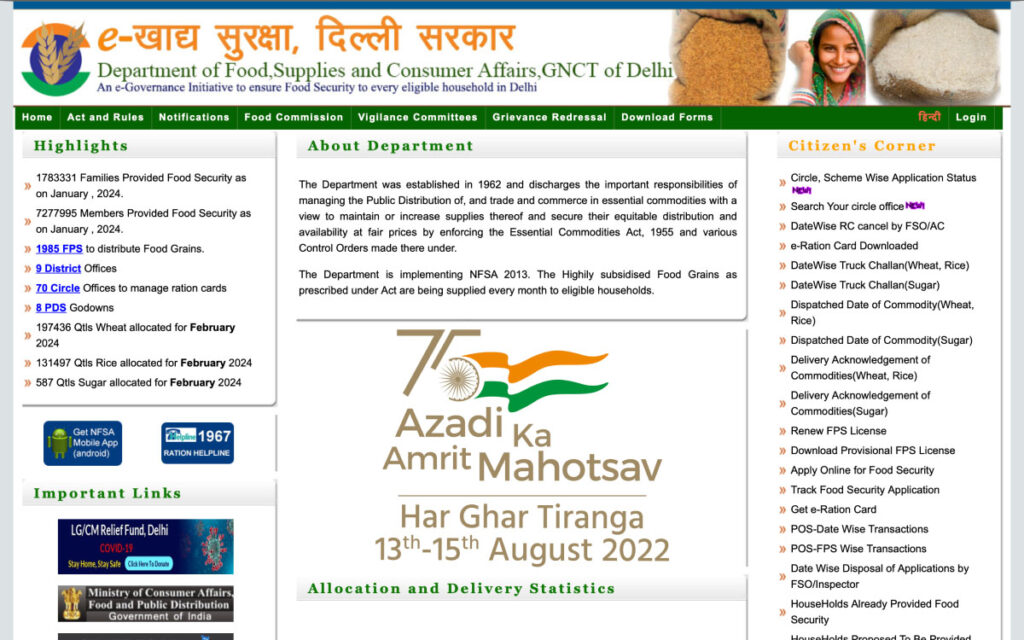
Step 2: Log in to the portal using your credentials.
Step 3: Locate and click on the “Application form for getting food security under the National Food Security Act (NFSA), 2013” option.
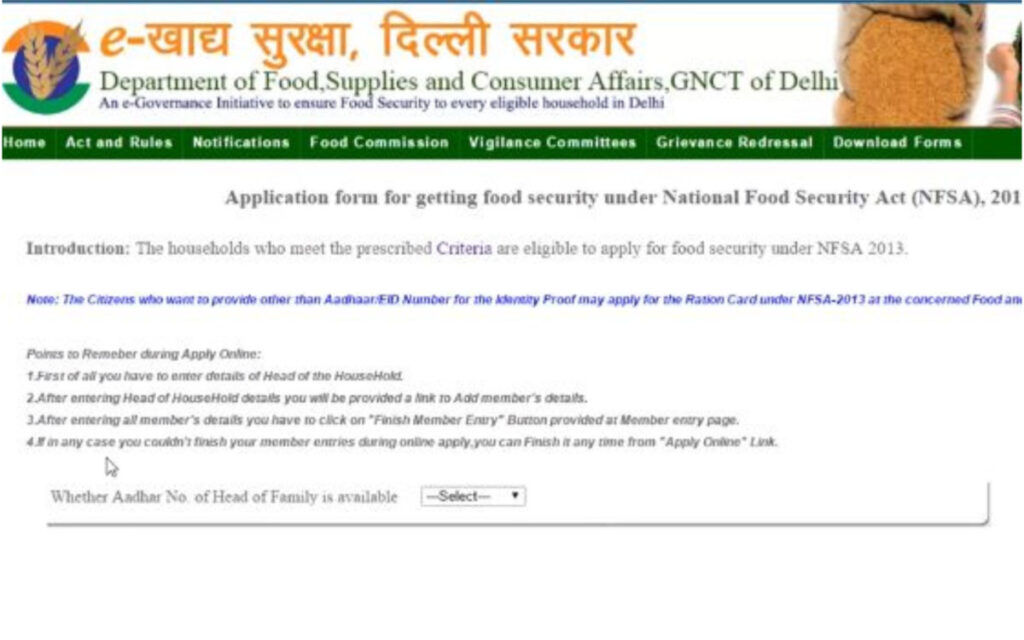
Step 4: The application form will appear on the next page. Fill in all the required details accurately.
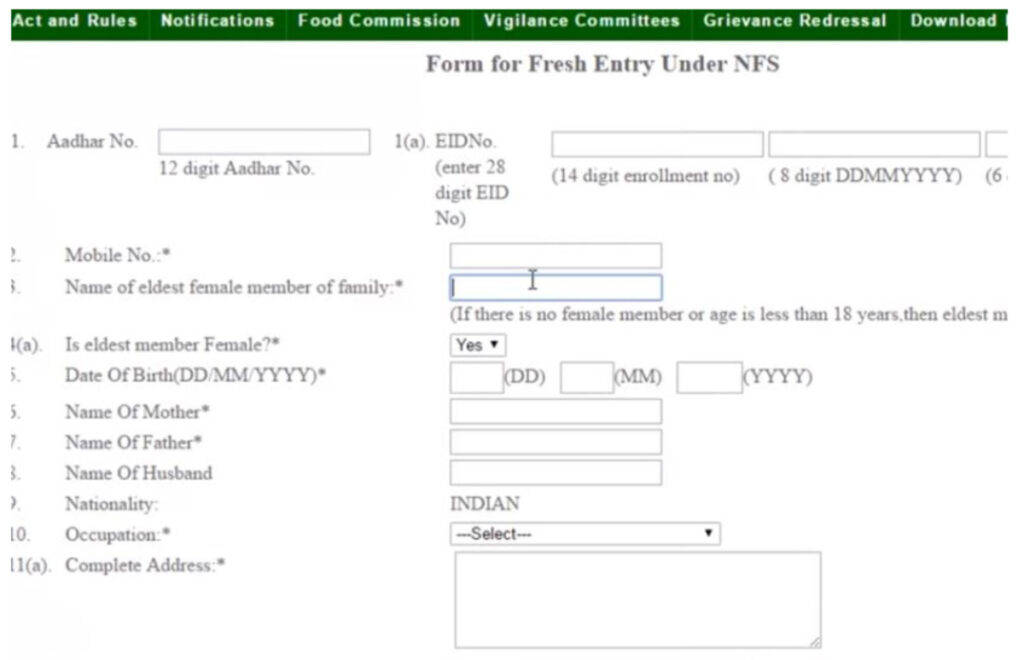
Step 5: Upload all the necessary documents as specified in the form.
Step 6: Once all the details and documents are provided, click on the “Apply Online” button to submit your application.
How to Check Your Ration Card Application Status?
After successfully applying for a ration card in Delhi, applicants have the option to track the status of their application. To do so, follow the steps below:
Step 1: Visit the official website of the Department of Food, Supplies and Consumer Affairs, GNCT of Delhi Government.
Step 2: Look for the “Track Your Application” or similar option on the website.
Step 3: Choose one of the four options provided for tracking the application status. This may include options like entering the application number, reference number, Aadhaar number, or mobile number.
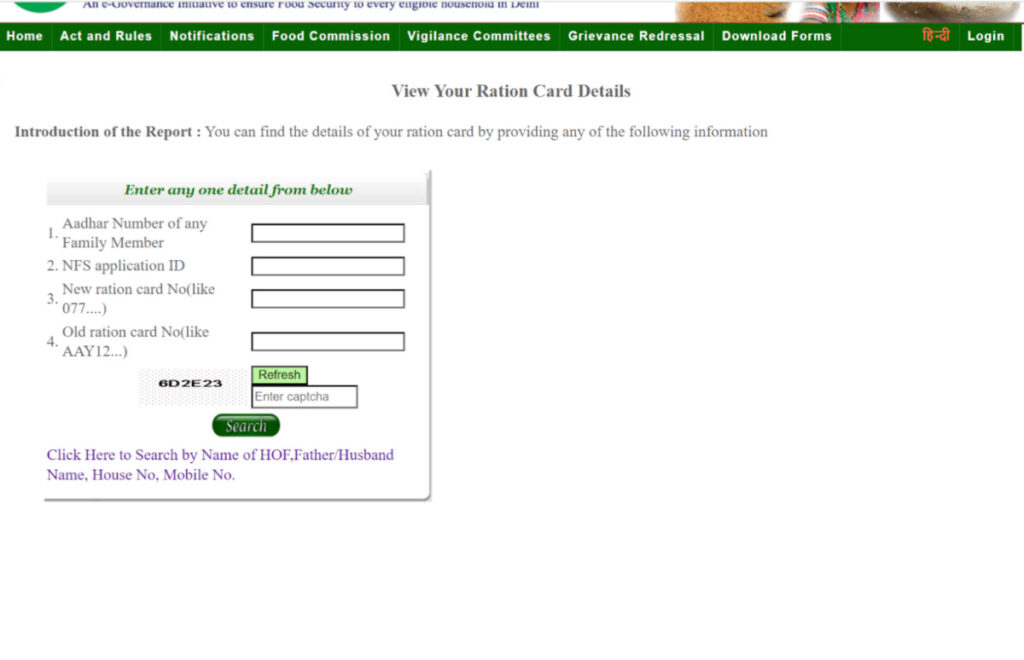
Step 4: Select the appropriate option and enter the required details as per the chosen option.
Step 5: After submitting the necessary details, the applicant will be able to view the status of their ration card application. This may include information on whether the application is under process, approved, or rejected.
Also Read: One Nation One Ration Card
How to Download Ration Card?
To download the E-Ration Card after the application has been approved, follow the steps below:
Step 1: Visit the official website of the concerned authority.
Step 2: Fill in all the required details, such as the ration card number and the name of the head of the household.
Step 3: An OTP (One-Time Password) will be sent to the registered mobile number of the applicant. Enter the received OTP and the Aadhaar number.
Step 4: The E-Ration Card will be available for download in PDF format. You can save and print it for your reference.
In summary, the ration card is a support system for people who are facing financial challenges. It helps them access essential food items at affordable prices. But the importance of the ration card goes beyond just food assistance. It also serves as a valid identification and proof of address, making it useful for official processes like applying for voter IDs or domicile certificates.
Disclaimer: This blog is written to make it easy for readers to understand complicated processes. Some information and screenshots may be outdated as government processes can change anytime without notification. However, we try our best to keep our blogs updated and relevant.


